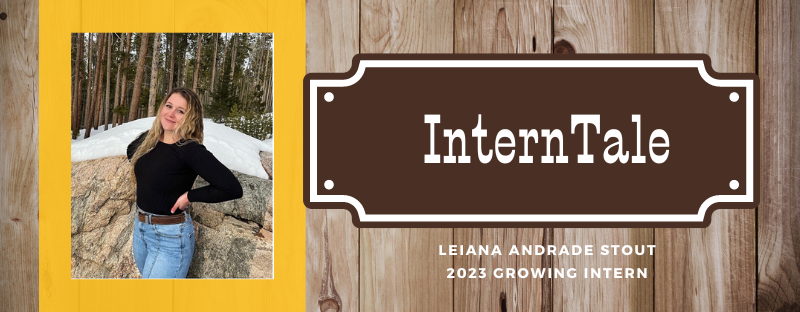A New System: Rotational Grazing
#bfrdpwy #aginternship #RightRisk

Some of the major points I have learned in the past week include how to herd cattle and move them into different pastures. I learned about a system called rotational grazing where you break your pastures up into smaller sections and rotate the cattle frequently. This helps to prevent overgrazing and allows the grass to grow back faster and healthier due to the long amount of time the grass sits without animals grazing on it. I also learned how to put up a temporary electric fence using polytape electric wire and plastic fence posts. We set the fence posts up in the middle of a pasture about twenty steps away from each other and strung the polytape electric wire through notches on the posts. This is a great way to temporarily separate your pastures into smaller paddocks. The plastic posts are easy to pull up from the ground when you are done with them and the electric polytape rolls back up easily, making it easy to relocate the electric fence to another pasture or area. We also did a branding this week with seven calves that were late arrivals. During this branding I learned about what medication and vaccinations they give their calves and where they administer the shots. The calves received a red mark to indicate that it had been branded and vaccinated, so we were able to look at that mark later down the road and be reminded.

One concept from this week that I would challenge would be the use of only electric fences throughout the property. Electric fence seems fairly easy to set up and it does a good job of keeping the cows in the pastures that they need to be in. However, it does not seem to work very well with containing the calves. I noticed the calves, especially the newborns, were easily able to slip underneath the electric fence and ended up in pastures that they were not supposed to be in, and then they were separated from their moms. They struggled with slipping back underneath the electric fence and rejoining the herd. I spent a lot of the time this week relocating calves and putting them back where they needed to be. Another concept I might challenge is that we have been waiting to collect hay from the pastures. There has been a lot of rain recently and the ground is still fairly wet so I understand hesitating to bring large equipment into the pasture and not wanting to tear up the ground. However, I will challenge that we still might be waiting to long to cut hay mainly since it is so important to provide that hay as food for the animals during the winter.

Some questions that I have include wondering why the use of electric fences seem so common in this part of Wyoming. I also wonder why electric fence continues to be used when it is not very effective at keeping all of the cows and the calves together. Another question of mine is if we are going to end up irrigating the ranch. It has been raining enough lately that we have not needed to irrigate so far in the year; however, I am curious if we are going to need to irrigate eventually if the rain slows down. I have never irrigated before so I would like to know how that process works, how the irrigation machines function, and how to use them.

I plan to use all of the information I have learned this week in my future. If I ever decide to have animals and run my own operation someday, it would be good to know how to herd and move cattle. I also like knowing how to make a temporary electric fence in case I decide to try rotational grazing one day. I am planning on a applying to Veterinary school this summer, so learning about medications and vaccinations and how to administer them is very interesting and useful information.
Submitted by: Leiana Andrade Stout
Edits by: GrowinG Internship Team

